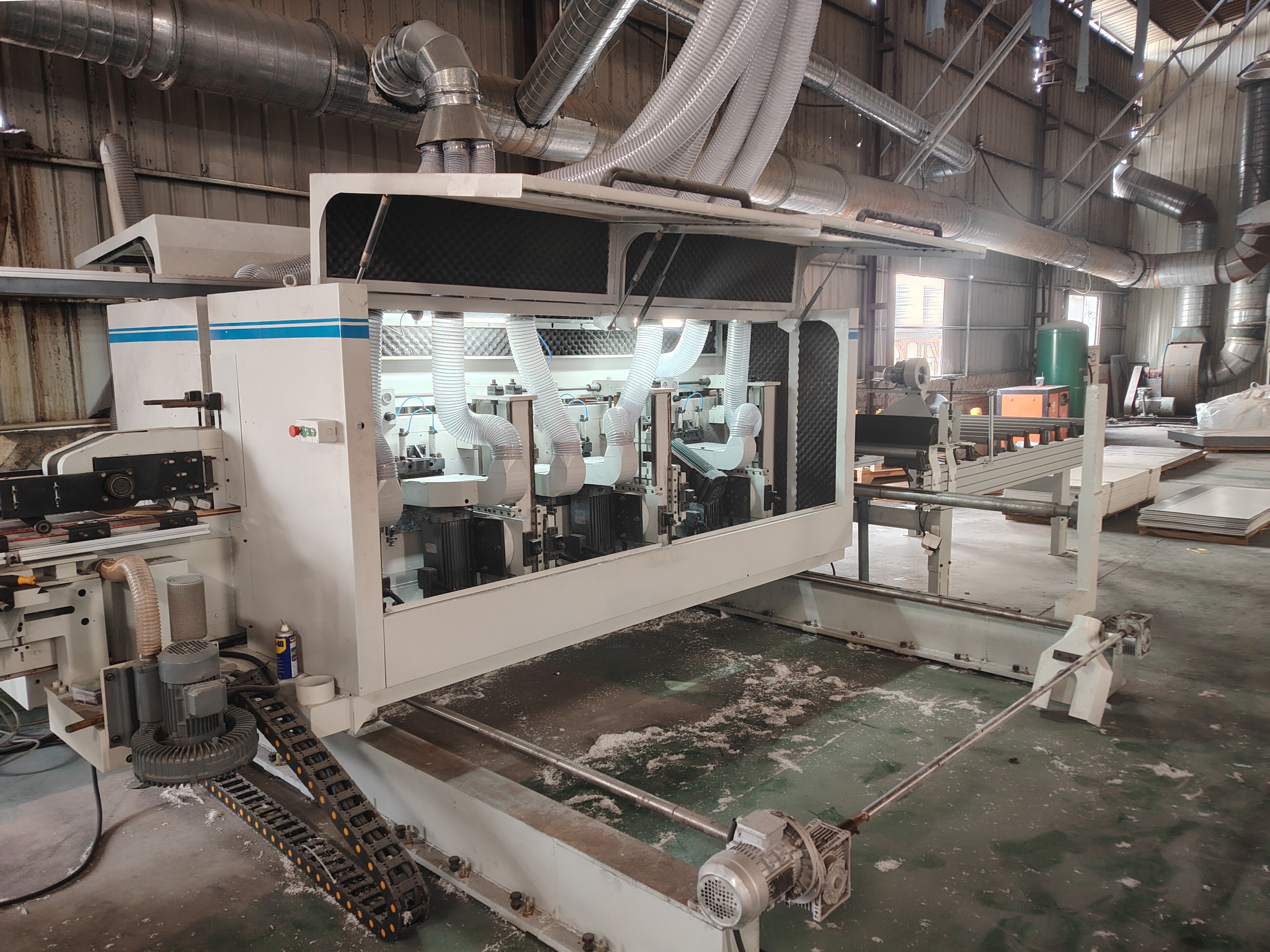הבנת פתרונות ארכיטקטוניים מודרניים לשיפור סביבות פנימיות
השילוב של אלמנטים עיצוביים תפקודיים באדריכלות מודרנית מהפכן את הדרך בה אנו ניגשים לאיכות הסביבה הפנימית. בין החדשנות הזו, פאנלי קיר עם סורגים צמחו לפתרון מתוחכם המשלב יופי תמציתי עם יתרונות מעשיים. רכיבי אדריכלות גמישים אלו משנים חלל במבנים מסחריים, מגורים ומוסדיים, ומציעים איזון מושלם בין צורה לתפקוד.
ככל שמעריכים ומעצבים מעדיפים פתרונות בנייה עמידים ויעילים, לוחות קיר עם סורגים בולטים בשל יכולתם להתמודד עם אתגרים אדריכליים מרובים בו-זמנית. בין אם מדובר בבקרת זרימת אויר או בהגברת תכונות אקוסטיות, הלוחות מייצגים התקדמות משמעותית בטכנולוגיית עיצוב בניינים.
ההנדסה של מערכות לוחות קיר עם סורגים
הרכב חומר מתקדם
מערכות לוחות קיר עם סורגים מודרניות משתמשות בחומרים איכותיים כגון אלומיניום, עץ וחומרים מאולחמים, כשכל אחד נבחר בזהירות ליישומים מסוימים. הבחירה בחומר משפיעה בצורה משמעותית על הביצועים והאורך התפוקתי. לדוגמה, לוחות אלומיניום מציעים עמידות גבוהה ועמידות בפני גורמים סביבתיים, תוך שמירה על פרופיל קל משקל. לוחות עץ מספקים תכונות אקוסטיות טבעיות ויוצרים אווירה חמה ומוזמנת, בעוד חומרים מאולחמים משלבים את היתרונות הטובים ביותר של מספר חומרים.
תהליך הייצור כולל הנדסה מדויקת ליצירת דפוסים וחורים שמאפשרים אופטימיזציה של תנועת האוויר תוך שמירה על שלמות המבנית. הדesignים הללו אינם אקראיים, אלא תוצאה של מחקר ובדיקות מרחיבים כדי להשיג מדדי ביצועים אופטימליים.
עקרונות ודפוסי עיצוב
היעילות של מערכת פ널 קיר עם סורגים נמצאת בהגדרת העיצוב המחשבת. מהנדסים לוקחים בחשבון גורמים כגון גודל החורים, הפיזור של הדפוס והעומק של הלוח כדי ליצור פתרונות המתאימים לדרישות הסביבתיות הספציפיות. המרחקים והמיקום של הפתחים מחושבים כדי להשיג קצב זרימה רצוי תוך מניעה של טורבולנציה לא רצויה.
דיזיינים עכשוויים כוללים דפוסים גאומטריים מתוחכמים שמשרתים הן מטרות אסתטיות והן פונקציונליות. ניתן להתאים את הדפוסים האלה באופן אישי כדי לשלוט בתפוצת האור, בבליעת הקול ובתנועה של האוויר, מה שעושה שכל התקנה ייחודית לסביבתה.
יכולות שדרוג צנרת אוורור
אופטימיזציה של זרימת אוויר טבעית
אחת התרומות העיקריות של התקנת לוחות רשת היא היכולת לקדם אוורור טבעי. הפתחים המהנדסים יוצרים מסלולים לזרימת אוויר שיכולים לצמצם בצורה משמעותית את התלות במערכות אוורור מכניות. גישה טבעית זו להעברת אוויר משפרת לא רק את היעילות האנרגטית, אלא תורמת גם לאיכות אוויר פנימית טובה יותר.
ניתן למקם את הלוחות באופן אסטרטגי כדי לנצל את דפוסי הרוח השלטים ואת עקרונות אפקט הקמה, ולבנות מערכת אוורור פסיבית הפועלת ברציפות ללא צריכה של אנרגיה. זרימת האוויר הטבעית הזו עוזרת לשמור על טמפרטורות נוחות בפנים ומפחיתה הצטברות של מזון פנימי.
שילוב עם מערכות מכניות
כאשר משולבים עם מערכות אוורור מכניות, התקנות של פנלי קיר סורגים יכולים לשפר את יעילות המערכת הכוללת. הפנלים עובדים בהרמוניה עם מערכות מיזוג, ומאפשרים הפצת אוויר יעילה יותר לאורך כל החלל. סינרגיה זו מובילה לצריכת אנרגיה מופחתת ולשליטה יציבה יותר בטמפרטורה.
עיצובים מתקדמים של פנלים יכולים לכלול חיישנים ובקרות אוטומטיות, המאפשרים תגובה דינמית לשינוי בתנאי הסביבה. שילוב חכם זה מבטיח ביצועי אוורור אופטימליים תוך שמירה על יעילות אנרגטית.

יתרונות ביצועי אקוסטיקה
תכונות ביטול שמע
התכונות האקוסטיות של מערכות פנלי קיר סורגים הן חשובות במיוחד ביישומים אדריכליים מודרניים. עיצוב הפנלים והרכב החומר שלהם פועלים יחד כדי לספוג ולפזר גלי שמע, ובכך מפחיתים הד, רענות וחזרת קול בתוך החללים. ניהול אקוסטי זה חשוב במיוחד במשרדים בנייה פתוחה, מוסדות חינוכיים ומרחבים ציבוריים שבהם שליטה בשמע היא קריטית.
ניתן לעצב את הלוחות עם דפוסי נקבוביות וחומרי גב שונים כדי למקד טווחי תדרים ספציפיים, ומספקים פתרונות אקוסטיים מותאמים לסביבות שונות. ניהול קול זה מאפשר יצירת חללים נוחים ופרודוקטיביים יותר.
אסטרטגיות להפחתת רעש
מעבר לכיבוי קול בסיסי, ניתן לעצב מערכות של לוחות רשת על קיר כדי להתמודד עם אתגרי בקרת רעש ספציפיים. הלוחות יכולים לכלול שכבות מרובות של חומרים בולעי קול, ויוצרים מחסומים יעילים הן נגד רעשים באוויר והן נגד רעשים המועברים דרך המבנה. הגישה הרב-שכבתית זו יעילת במיוחד בסביבות עירוניות בהן זיהום קול חיצוני הוא עניין חשוב.
הצבת הלוחות בצורה אסטרטגית מאפשרת יצירת אזורי אקוסטיקה בתוך חללים גדולים, ומאפשרת ניהול קול טוב יותר ללא צורך בחומות פיזיות. גמישות זו הופכת אותם לאידיאליים לעבודה בחלל מודרני ומשתנה.
השפעה סביבתית וקיימות
תרומה ליעילות אנרגטית
יישום של מערכות פנלים לדופן רשתית יכול להשפיע משמעותית על הביצועים האנרגטיים הכוללים של בניין. על ידי קידום צורף טבעי וצמצום עומס על מערכות מכניות, הפנלים תורמים לצריכת אנרגיה מופחתת ולחיסכון בעלויות המשלכות. יכולת הצורף הפסיבי יכולה להיות יעילה במיוחד בעונות המעבר, כאשר טמפרטורות החוץ הן מתונות.
התפקיד של הפנלים באור יום ובניהול תרמי יכול להפחית עוד יותר את דרישות האנרגיה להארה מלאכותית ולשליטה בטמפרטורה. גישה מקיפה זו ליעילות אנרגטית עונה על עקרונות בנייה עיראתיים מודרניים.
בחירת חומרים בר קיימא
יצרני פאנלי קיר רשת מודרניים מתמקדים ביתר שאת בבחירת חומרים ותהליכי ייצור בר-קיימא. כיום, רבים מהפאנלים מיוצרים באמצעות חומרים מחזוריים וניתנים להחזרה בעצמם בסוף מחזור החיים שלהם. העמידות והחיים הארוךים של הפאנלים תורמים אף הם ליתרונות הסביבתיים שלהם על ידי הפחתת הצורך בהחלפה תכופה.
השימוש בחומרים מקומיים ומתחדשים בייצור הפאנלים יכול לצמצם עוד יותר את ההשפעה הסביבתית תוך תמיכה בכלכלות אזוריות. הالتزמות ליתרונות סביבתיים זו משתרעת לאורך כל מחזור חיי המוצר, החל בייצור, דרך ההתקנה ועד להחזרה סופית.
שאלות נפוצות
איך משפיעים פאנלי קיר רשת על עלויות התשתית של בניין?
פנלי קיר סורגים מפחיתים בדרך כלל את עלות התפעול והתחזוקה ארוכת הטווח הודות לבנייה עמידה ועיצוב קל לניקוי. לרוב, הפנלים דורשים תחזוקה מינימלית מעבר לניגוב אבק רגיל ולניקיון מזדמן, ובנוסף, תפקידם בהפחתת עומס על מערכת ה- HVAC יכול להוביל לצרכים מופחתים של תחזוקת המערכת המכנית.
מהו אורך החיים הרגיל של מערכת פנלי קיר סורגים?
כאשר מותקנים ומתחזקים כראוי, מערכות פנלי קיר סורגים יכולות לשרת בין 20 ל-30 שנה או יותר. אורך החיים בפועל תלוי בגורמים כגון איכות החומר, תנאי הסביבה ודפוסי השימוש. לפנלים באיכות גבוהה מאלומיניום או מחומרים מרוכבים יש לעתים קרובות אחריות של 15–20 שנים.
האם ניתן להתאים פנלי קיר סורגים לצורך דרישות אקוסטיות מסוימות?
כן, ניתן לעצב פנלי קיר עם סורגים כדי לעמוד ביעדי ביצועים אקוסטיים מסוימים. יצרנים יכולים להתאים דפוסי חריצים, עובי הלוחות וחומרי גביה כדי להשיג מקדמי בליעה רצויים ומאפייני תגובה לתדרים בהתאם לדרישות החלל.

